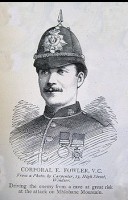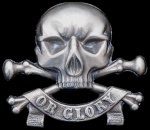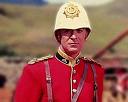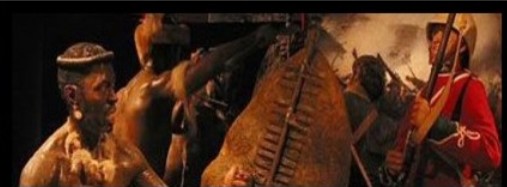| Latest topics | » The Pictorial World - March 15th 1879 Yesterday at 1:13 pm by ben2000 » The lost diary of Pvt James Owen Thu Jul 25, 2024 12:03 pm by miklew » Last of the 24th at Isandhlwana Wed Jul 24, 2024 6:16 pm by John Young » What was the uniform of field marshals/generals in the zulu war? Mon Jul 22, 2024 6:53 am by John Young » Henderson and the NNH at Rorke's Drift  Sat Jul 20, 2024 12:17 pm by SRB1965 » Capt. D. Hayes 1/3rd Regt., NNC Thu Jul 18, 2024 11:11 am by Julian Whybra » The Wrecked Camp Wed Jul 17, 2024 4:33 pm by Julian Whybra » Private N/N John Robert Branch 90th Regiment and his discovered diary Mon Jul 15, 2024 8:53 pm by 1879graves » Private John Scott 24th Regiment a fugitive at large Sun Jul 14, 2024 12:06 pm by 1879graves » 90th foot sgt T. Collins 214 Sun Jul 14, 2024 10:57 am by johnman » Baron Von Steitencron Wed Jul 10, 2024 3:10 pm by Julian Whybra » Sgt Joseph Windridge, Defender of Rorke's Drift - Memorial Tue Jul 09, 2024 3:15 am by 90th » Writing advice Sun Jul 07, 2024 4:04 pm by Julian Whybra » South Africa 1877-79, 1 clasp, 1877-8-9 (4389 Fr. Sergt. S. Smith. O/2. Bde. R.A.) Sun Jul 07, 2024 9:30 am by rai » The trashing of the Zulu monument to the brave warriors at Isandlawana March 12, 2024 has been blamed on scrap metal scavengers. Thu Jul 04, 2024 7:41 pm by ADMIN» The Goodwill Zulu Festival: Celebrating the Welsh and KwaZulu Natal Shared Heritage. Thu Jul 04, 2024 7:27 pm by ADMIN» Any nominal role of G Coy 2/24th regiment  Thu Jul 04, 2024 11:18 am by Wayne » Bassage Diary Thu Jul 04, 2024 9:31 am by Julian Whybra » Prior to Sihayo's Kraal  Thu Jul 04, 2024 9:19 am by 90th » British Fort Locations Thu Jul 04, 2024 3:40 am by 90th » Sergeant 1064 Tom Hick / Hicks G Company 2/24th Regiment Wed Jul 03, 2024 11:05 am by Julian Whybra » A Hungarian soldier in the Zulu War (?) Fri Jun 28, 2024 2:31 pm by Mr M. Cooper » Private 25B/279 Henry Sears Bugler E Company 24th Reg. KIA Isandlwana Thu Jun 27, 2024 1:07 pm by gardner1879 » Hamilton Browne's birthday Fri Jun 21, 2024 9:22 am by Julian Whybra » Zulu "Corps" Thu Jun 20, 2024 6:01 pm by Hobbes » Army Pay Department Personnel Thu Jun 20, 2024 11:49 am by Julian Whybra » Ntshingwayo birth date Sun Jun 16, 2024 11:37 am by Hobbes » Zibhebhu and Cetshwayo's family Wed Jun 05, 2024 9:11 pm by Julian Whybra » Smith's Store/Hotel Wed Jun 05, 2024 6:06 pm by Julian Whybra » Corporal James Frowen Williams F Company.  Tue Jun 04, 2024 5:20 pm by Julian Whybra » Shaka iLembe Sat Jun 01, 2024 1:27 pm by Jon84 » Bugler 1415 Thomas Finn / Flin 90th Regiment  Sat May 25, 2024 11:28 am by johnman » Inspector-General Evelyn Richard Hugh Pollard Tue May 14, 2024 10:13 am by ADMIN» Alfred Fairlie Henderson photographs. Sat May 11, 2024 8:01 am by Julian Whybra » Fairlie's Native Police Thu May 02, 2024 9:12 pm by Hobbes |
| July 2024 | | Mon | Tue | Wed | Thu | Fri | Sat | Sun |
|---|
| 1 | 2 | 3 | 4 | 5 | 6 | 7 | | 8 | 9 | 10 | 11 | 12 | 13 | 14 | | 15 | 16 | 17 | 18 | 19 | 20 | 21 | | 22 | 23 | 24 | 25 | 26 | 27 | 28 | | 29 | 30 | 31 | | | | |  Calendar Calendar |
|
| Top posting users this month | |
| New topics | » The Pictorial World - March 15th 1879 Yesterday at 1:13 pm by ben2000 » The lost diary of Pvt James Owen Thu Jul 25, 2024 12:03 pm by miklew » Last of the 24th at Isandhlwana Wed Jul 24, 2024 5:53 pm by miklew » What was the uniform of field marshals/generals in the zulu war? Sun Jul 21, 2024 12:30 pm by darthvaix » Henderson and the NNH at Rorke's Drift  Fri Jul 19, 2024 1:29 pm by SRB1965 » Capt. D. Hayes 1/3rd Regt., NNC Wed Jul 17, 2024 10:52 pm by Julian Whybra » The Wrecked Camp Sun Jul 14, 2024 8:51 am by 61MECH » The trashing of the Zulu monument to the brave warriors at Isandlawana March 12, 2024 has been blamed on scrap metal scavengers. Thu Jul 04, 2024 7:41 pm by ADMIN» The Goodwill Zulu Festival: Celebrating the Welsh and KwaZulu Natal Shared Heritage. Thu Jul 04, 2024 7:27 pm by ADMIN |
| Zero tolerance to harassment and bullying. | |
Due to recent events on this forum, we have now imposed a zero tolerance to harassment and bullying. All reports will be treated seriously, and will lead to a permanent ban of both membership and IP address.
Any member blatantly corresponding in a deliberate and provoking manner will be removed from the forum as quickly as possible after the event.
If any members are being harassed behind the scenes PM facility by any member/s here at 1879zuluwar.com please do not hesitate to forward the offending text.
We are all here to communicate and enjoy the various discussions and information on the Anglo Zulu War of 1879. Opinions will vary, you will agree and disagree with one another, we will have debates, and so it goes.
There is no excuse for harassment or bullying of anyone by another person on this site.
The above applies to the main frame areas of the forum.
The ring which is the last section on the forum, is available to those members who wish to partake in slagging matches. That section cannot be viewed by guests and only viewed by members that wish to do so. |
| Fair Use Notice | | Fair use notice.
This website may contain copyrighted material the use of which has not been specifically authorised by the copyright owner.
We are making such material and images are available in our efforts to advance the understanding of the “Anglo Zulu War of 1879. For educational & recreational purposes.
We believe this constitutes a 'fair use' of any such copyrighted material, as provided for in UK copyright law. The information is purely for educational and research purposes only. No profit is made from any part of this website.
If you hold the copyright on any material on the site, or material refers to you, and you would like it to be removed, please let us know and we will work with you to reach a resolution. |
| | | Durban Volunteer Artillery |  |
| | | Author | Message |
|---|
Rory Reynolds
Posts : 56
Join date : 2017-07-02
Location : Farnham, Surrey
 |  Subject: Durban Volunteer Artillery Subject: Durban Volunteer Artillery  Fri Feb 08, 2019 6:19 pm Fri Feb 08, 2019 6:19 pm | |
| I have a no clasp SAGS to Quartermaster Holmes of the Durban Volunteer Artillery.
Does anyone have any info on this unit and, more particularly, Holmes himself whom I suspect is Reuben Holmes, a Durban-based builder.
Regards
Rory |
|   | | littlehand

Posts : 7076
Join date : 2009-04-24
Age : 55
Location : Down South.
 |  Subject: Re: Durban Volunteer Artillery Subject: Re: Durban Volunteer Artillery  Fri Feb 08, 2019 7:13 pm Fri Feb 08, 2019 7:13 pm | |
| "Captain A. W. Evans was appointed to the command of the artillery company which existed as a company of the Durban Rifle Guard till 1870 when it broke away and became a separate unit under the name Durban Volunteer Artillery. In April, 1892, the name was changed to Natal Field Artillery. Captain A. W. Evans remained in command after the separation until the end of 1870 or early in 1871 when he retired and was succeeded by Captain Archibald McNeil who had been Lieutenant of the company since 1864. He held the command till his death in 1884 and was in command during the Zulu War of 1879. Captain Reuben W. Beningfield, later Lieut.-Colonel, succeeded to the command, afterwards commanding the Natal Field Artillery until March, 1898. It was due to Captain Beningfield that at last the Government authorised the horsing of the Durban Volunteer Artillery. Prior to 20th March, 1884, the two guns of the battery, 7-pounder Armstrong B.L., were entirely man-handled by drag-ropes. Captain Dan Taylor succeeded Major Beningfield in March, 1898, in command of the N.F.A., serving through the Anglo-Boer War of 1899—1902. He relinguished the command of the battery in March, 1903, when he was promoted Lieut-Colonel and appointed to the command of the 1st Brigade, Natal Field Artillery formed in that month and consisting of three six-gun batteries, A., B., and C. He retired in 1905. He was succeeded by Lieut.-Colonel H. H. C. Puntan in August of that year, having, as Major, previously commanded A. Battery since April, 1903. Major Colin Wilson succeeded Lieut.-Colonel Puntan in command of A. Battery in April, 1905, and was promoted to Lieut.-Colonel on the conversion of two batteries of the brigade to Durban Garrison Artillery in August, 1912. Captain R Murison, M.D., commanded B. Battery from July, 1904, to October, 1906, and was succeeded by Major G. R. O. Edwards till August, 1912. C. Battery was originally a 2-gun artillery company of the Natal Royal Regiment — infantry — of Pietermaritzburg under Major F. S. Tatham and at first man-handled. In June, 1903, the company broke off and was formed into a 4-gun horsed field artillery battery. Upon Union this battery remained as such unchanged while A. and B. Batteries were converted to garrison artillery. Before Union and after con-version to a 4-gun horsed battery C. Battery was a unit of the 1st Natal Field Artillery Brigade, but it was later (1916) absorbed into the South African Field Artillery. C. Battery served through the German South West Africa campaign as a field battery, drawn by donkeys, as part of Colonel Berrange's Desert Column.
The strength of the Durban Volunteer Artillery was about 58, all ranks. By 1874 this had dropped to 24 by reason of migration of members from Durban and their dissatisfaction at the many months of delay that occurred in paying them for their services in Zululand in 1874 when the battery formed part of the Natal force which attended the Coronation of King Cetshwayo. In 1875 the strength was about 76; in 1895 the Natal Field Artillery was over 250 strong and henceforth, being popular units, had no difficulty in keeping up to the full strength of their establishment which was based upon that of Imperial field batteries.
As recorded above, up to March, 1903, there was only one battery of artillery in Natal, but in that month the raising of two more field batteries was authorised by the Natal Government and these came into being in June, 1903, being B. and C. Batteries. The latter was composed almost entirely of civil servants and was known as the Civil Service Battery. The batteries were 6-gun units, 15-pounder B.L. and it is recorded that the guns with their entire equipment, so-called spares from the Anglo-Boer War, were bought by Natal from the British Government for one shilling each: a gift, of course. C. Battery soon had to change its name to D. Battery upon discovery of the fact that the battery raised in Pietermaritzburg about the same time as C. Battery was raised in Durban ante-dated the new Durban unit by a few weeks and claiming priority as C. Battery and succeeded. C. Battery — P.M. Burg1— was commanded by Major (later Lieut.-Colonel) Frederick S. Tatham, afterwards Justice Tatham, who was succeeded successively by Major W. S. Bigby and Major (later Lieut.-Colonel) W. P. M. Johnston. D. Battery existed till 1904 when it was disbanded, most of the personnel transferring to A. and B. Batteries.
In 1905 a Pom-Pom section of two guns and two ammunition wagons, horse-drawn, was raised in Durban and attached to the 1st N.F.A. Brigade. The strength was 23, all ranks. This small unit took a very useful part in the Zulu Rebellion operations in 1906—1907. It was disbanded at the end of 1907.
Medical, veterinary, signalling, supply and transport services were rendered by detachments furnished to the brigade from those departmental units of the Natal forces. The Head-quarters of the Brigade were in Durban.
The first weapons of the Durban Rifle Guard Artillery Company are not now known as no record can be traced about them, moreover it is not even known for certain whether any guns were ever issued to the unit. The first guns of the Durban Volunteer Artillery were 7-pounder B.L. Armstrong mountain screw guns, followed in 1899 by 7-poundcrs of the same make but adapted to field carriages. These latter were used during the Anglo-Boer War and were in action at the battle of Elandslaagte on 21st October, 1899. But they were hopelessly outranged by the Boer field guns which were of the most modern continental type and for this reason the battery played only a minor part in subsequent phases of the war, being used mostly on line-of-communication duties in northern Natal. In 1901 these out-of-date guns — pop-guns — were withdrawn and the battery was armed with 15-pounder modern field guns mounted on Indian pattern carriages.
Source: Short History Of The Volunteer Regiments Of Natal And East Griqualand, Past and Present. Compiled by Colonel Godfrey T Hurst, DSO OBE VD, Honorary Colonel of the Natal Mounted Rifles." |
|   | | 1879graves

Posts : 3379
Join date : 2009-03-03
Location : Devon
 |  Subject: Re: Durban Volunteer Artillery Subject: Re: Durban Volunteer Artillery  Fri Feb 08, 2019 7:24 pm Fri Feb 08, 2019 7:24 pm | |
| Hi Rory This is the only information I have. [You must be registered and logged in to see this image.] |
|   | | Rory Reynolds
Posts : 56
Join date : 2017-07-02
Location : Farnham, Surrey
 |  Subject: Re: Durban Volunteer Artillery Subject: Re: Durban Volunteer Artillery  Fri Feb 08, 2019 7:28 pm Fri Feb 08, 2019 7:28 pm | |
| Much obliged chaps - this certainly helps with my understanding of what they did |
|   | | 24th

Posts : 1862
Join date : 2009-03-25
 |  Subject: Re: Durban Volunteer Artillery Subject: Re: Durban Volunteer Artillery  Fri Feb 08, 2019 7:45 pm Fri Feb 08, 2019 7:45 pm | |
| [You must be registered and logged in to see this image.]Durban Volunteer Artillery... DURBAN, SOUTH AFRICA - 1883: Durban Volunteer Artillery. (Photo by Natal Witness Archives/Gallo Images/Getty Images |
|   | | Rory Reynolds
Posts : 56
Join date : 2017-07-02
Location : Farnham, Surrey
 |  Subject: Re: Durban Volunteer Artillery Subject: Re: Durban Volunteer Artillery  Sat Feb 09, 2019 8:44 pm Sat Feb 09, 2019 8:44 pm | |
| Cracking image 24th - thank you. How do i go about removing the Getty image label? |
|   | | 1879graves

Posts : 3379
Join date : 2009-03-03
Location : Devon
 |  Subject: Re: Durban Volunteer Artillery Subject: Re: Durban Volunteer Artillery  Sat Feb 09, 2019 10:29 pm Sat Feb 09, 2019 10:29 pm | |
| |
|   | | Rory Reynolds
Posts : 56
Join date : 2017-07-02
Location : Farnham, Surrey
 |  Subject: Re: Durban Volunteer Artillery Subject: Re: Durban Volunteer Artillery  Sun Feb 10, 2019 5:00 am Sun Feb 10, 2019 5:00 am | |
| |
|   | | | | Durban Volunteer Artillery |  |
|
Similar topics |  |
|
| | Permissions in this forum: | You cannot reply to topics in this forum
| |
| |
| |
